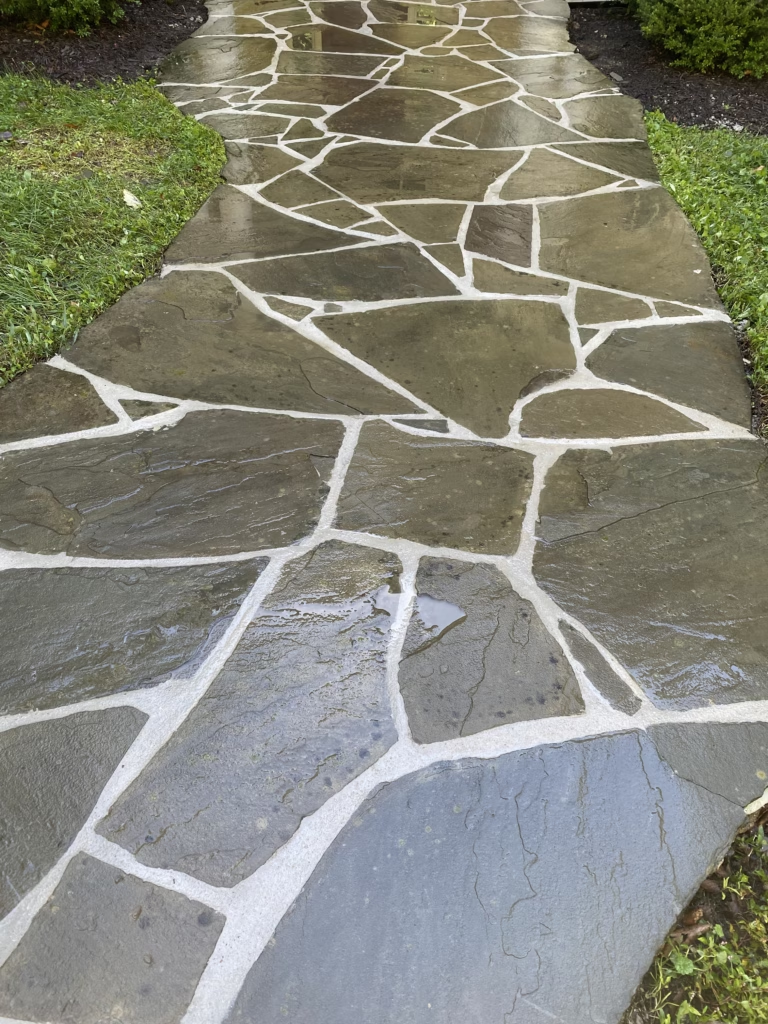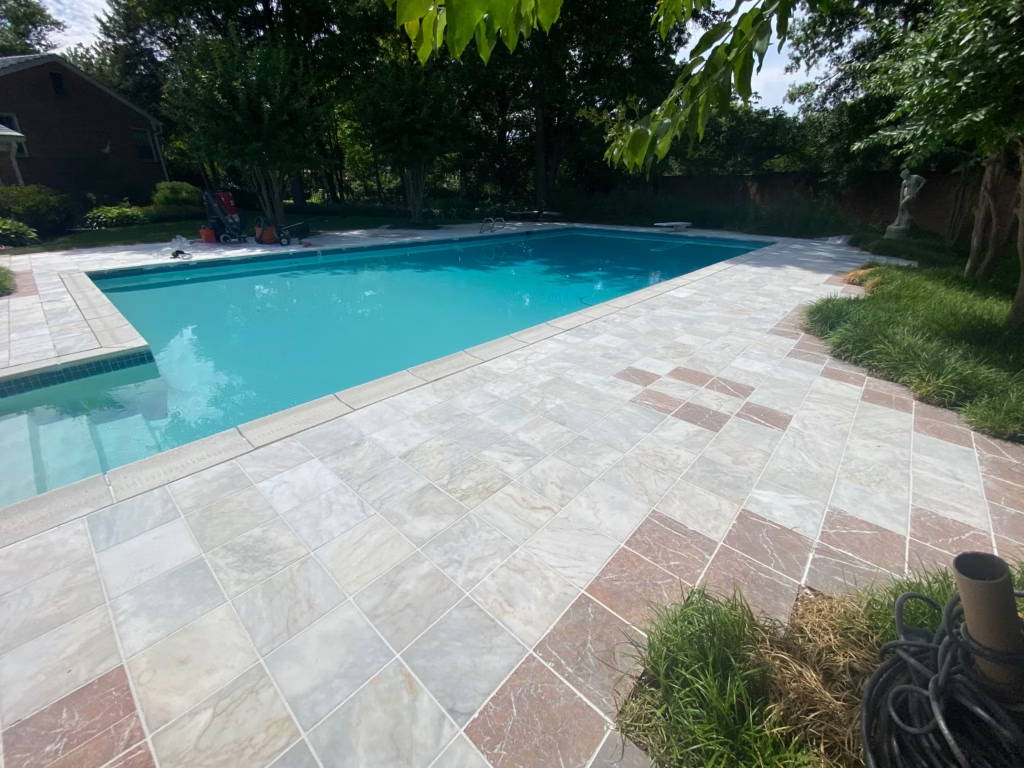Outdoor stone surfaces add timeless beauty and durability to patios, pathways, pool decks, and outdoor living spaces. However, without proper care, these surfaces can suffer from stains, cracks, fading, and even structural damage.
From harsh weather to heavy foot traffic, outdoor elements constantly test your stone’s strength. With routine stone maintenance and preventative measures, you can preserve the integrity and appearance of your investment for years to come.
Regular Cleaning for Lasting Beauty
Keeping your outdoor stone clean is the foundation of proper maintenance. Dirt, leaves, and organic matter can build up, causing discoloration and deterioration.
Maintenance Tips:
Sweep or rinse regularly with a garden hose to prevent debris buildup.
For stubborn grime, use a pH-neutral, stone-safe cleaner.
To treat moss, mildew, or algae, mix water with vinegar or use a specialized stone cleaner.
Avoid harsh chemicals like bleach, which can cause etching or discoloration.
Pro Tip: Schedule a deep cleaning every 3–6 months to maintain your stone’s natural luster.
Protective Sealing for Long-Term Preservation

Stone is naturally porous, which means it absorbs water, oil, and other contaminants that can lead to permanent stains or weather damage. Applying a high-quality stone sealer creates a barrier that protects against these threats.
How to Seal Outdoor Stone:
Clean and dry the surface thoroughly.
Apply the sealer evenly using a paint roller or sprayer.
Let it cure completely before exposing it to foot traffic or moisture.
Resealing Frequency:
Patios & walkways: Every 1–3 years.
Pool decks: Every 1–2 years due to increased water exposure.
Preventing and Removing Stains
Outdoor stone is prone to staining from grease, rust, water runoff, and organic debris.
Oil & grease stains: Use a degreaser or stone-safe poultice.
Rust stains: Treat with a specialized rust remover.
Organic stains: Tackle moss or mildew with a mild bleach solution—always test a small area first.
Quick Tip: Blot spills immediately instead of wiping to avoid spreading the stain.
Addressing Cracks and Chips Before They Worsen
Cracks may seem minor, but they allow moisture to seep in, leading to further stone damage and potentially costly repairs.
Small cracks can often be filled with stone epoxy or filler.
Loose or broken stones should be handled by a professional stone repair service.
Conduct seasonal inspections to identify problems before they worsen.
Protecting Stone from Weather Damage

Outdoor stone faces constant exposure to sun, rain, snow, and temperature fluctuations.
UV rays can cause fading and discoloration.
Rainwater and poor drainage may lead to erosion.
Freeze-thaw cycles cause moisture to expand inside the stone, leading to cracks.
To minimize weather damage:
Maintain proper drainage around patios and walkways.
Use outdoor rugs or covers in extreme weather conditions.
Reseal stone regularly to create a protective barrier.
Winter Care and Ice Prevention
Snow and ice are especially harsh on natural stone surfaces.
Avoid traditional rock salt, which can erode stone and leave unsightly residue.
Choose stone-safe ice melt or sand for traction.
Use a plastic snow shovel to prevent scratches when clearing snow.
Shovel early to prevent water from seeping into the stone and freezing.
Minimizing Wear and Tear for Longevity
Daily use can lead to gradual wear, especially on patios and pool decks.
Avoid dragging furniture across stone surfaces—use felt pads or outdoor rugs.
Rotate heavy furniture periodically to prevent uneven pressure points.
Place mats at entrances to reduce dirt transfer.
Inspect stone quarterly for scratches, chips, or discoloration.
When to Call a Professional for Stone Maintenance

Some issues require expert care, especially:
Deep-set stains that don’t respond to DIY cleaning.
Severe cracking or loose stone pavers.
Restoring faded or etched stone to its original beauty.
Professional services, like those offered by Rose Restoration, include deep cleaning, polishing, and full restoration to extend the lifespan of your outdoor stone surfaces.
Preserve the Beauty of Your Outdoor Stone
Your stone patios, walkways, and pool decks are long-term investments in both beauty and functionality. With regular cleaning, sealing, and professional care, you can prevent damage, reduce wear, and maintain a stunning outdoor space.
When in doubt, trust the experts at Rose Restoration for stone repair, sealing, and restoration services. Contact us today to schedule a consultation and keep your outdoor stone surfaces looking their best year after year.
Bonus: Fun Facts About Outdoor Stone
Want to wow your guests while showing off your pristine patio or pool deck? Here are some stone care fun facts:
Granite and travertine are top choices for pool decks because they stay cool underfoot.
Properly sealed stone patios can increase property value and boost curb appeal.
Unsealed stone can absorb 15% of its weight in water, leading to damage during freeze-thaw cycles.
Many historic landmarks are preserved using the same stone restoration techniques offered by Rose Restoration.
Travertine pool decks require sealing every 12–18 months due to constant water exposure.
Eco-friendly sealers now provide protection without harming surrounding plants or pets.
Natural stone like marble, slate, and limestone are all porous—but each requires unique maintenance techniques.

